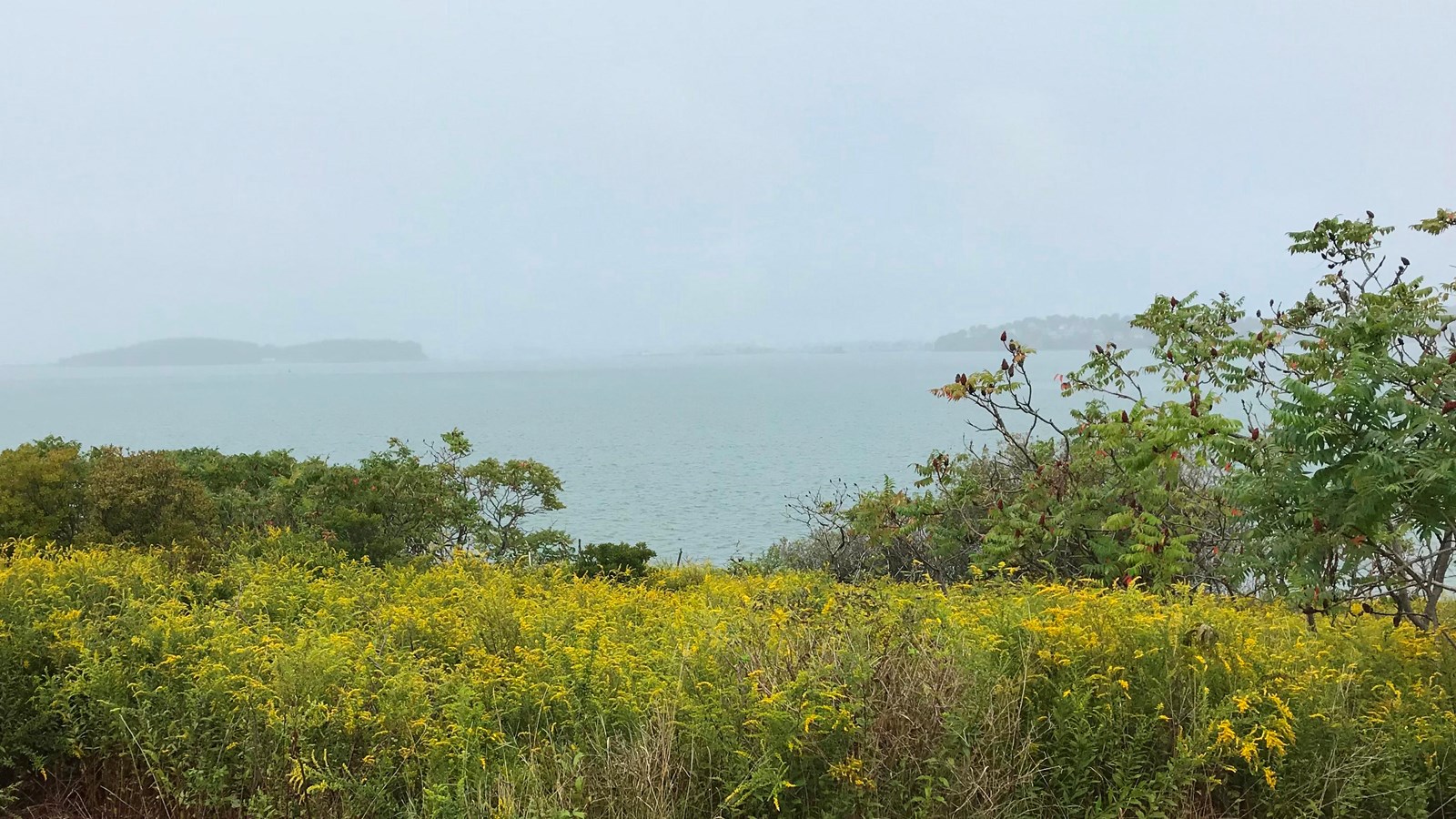Last updated: July 13, 2024
Place
Bumpkin Island

NPS Photo
Grill, Picnic Table, Tent Campsites, Toilet - Vault/Composting
Located in the Hingham Bay, just 10 miles South of Long Wharf, sits a 65-acre island called Bumpkin Island. It has one central drumlin with an elevation of 70 feet, and excellent views of the surrounding Hingham islands.
Used seasonally by the Indigenous population prior to European settlement, Bumpkin became one of the eight islands that established farming communities in the early years of colonization. Samuel Ward purchased the island from the town of Weymouth in the late 1630s. Harvard College inherited the island after Ward’s death in 1661. The college leased the island to tenant farmers who grew fruits and vegetables. During this time, fish drying operations occurred on the island, followed by a fish smelting operation.
Harvard continued to collect rent from island tenants until 1900, when a 500-year lease signed by the Burrage family went into effect.1 Albert Burrage commissioned a children’s hospital to be built in the center of the island. Architect Charles Brigham, designed a three-story building that took advantage of both the summer wind and sunlight. The building included two open air play areas, and a pavilion. The Burrage Hospital opened its doors in 1902. It offered free treatment to children with non-contagious diseases and disabled children whose parents were not able to give adequate care.2
The hospital suspended operations and transferred the island to the federal government when World War I began. The Navy built barracks, which housed 1,300 soldiers from 1917-1918.3 A training station also went into operation at this time.
The Navy did not continue use of the island after the war, and the hospital reopened in the summer of 1940 to serve polio patients.4 This continued until 1946, when a fire burnt the hospital to the ground.
In 1973, The Massachusetts Department of Environmental Management designated Bumpkin Island, along with 15 other islands in the harbor, part of the Boston Harbor Islands State Park. Twenty years later, The Friends of the Boston Harbor Islands established 48 test plots with 1500 seedlings to restore the historic vegetation on the island.5 Today, the island is managed by the Department of Conservation and Recreation.
Learn More...
Footnotes:
- Olmsted Center for Landscape Preservation, Cultural Landscape Report: Boston Harbor Islands National & State Park, Volume 2: Existing Conditions, (Boston: National Park Service, 2017), 9-20; Olmsted Center for Landscape Preservation, Cultural Landscape Report: Boston Harbor Islands National & State Park, Volume 1: Historical Overview, (Boston: National Park Service, 2017), 26.
- Olmsted Center for Landscape Preservation, Cultural Landscape Report, Volume 1: Historical Overview, (Boston: National Park Service, 2017), 144-147.
- Olmsted Center for Landscape Preservation, Cultural Landscape Report, Volume 1: Historical Overview, (Boston: National Park Service, 2017), 97, 144.
- Olmsted Center for Landscape Preservation, Cultural Landscape Report, Volume 2: Existing Conditions, (Boston: National Park Service, 2017), 10; Olmsted Center for Landscape Preservation, Cultural Landscape Report, Volume 1: Historical Overview, (Boston: National Park Service, 2017), 145.
- Olmsted Center for Landscape Preservation, Cultural Landscape Report, Volume 1: Historical Overview, (Boston: National Park Service, 2017), 37, 145.
